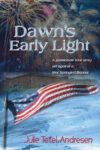The Upside of Generative AI
Let’s consider the upside of Generative AI. But first, let’s acknowledge that technology is not the problem. It’s what people do with technology that can be problematic. And second, new forms of media do not eradicate old forms. Movies didn’t replace theater. TV didn’t replace radio. So, come on down, AI, and join the party!
Art and the Upside of Generative AI
Visual artists regularly mine the history of the visual arts for inspiration.
Refik Anadol’s Unsupervised (2021-2023) is another such effort. The artist trained a machine learning model on works from the Museum of Modern Art’s collection. The resulting display is a sequence of images that hint at its data source. The title image for this blog is an image from Anadol’s work.
Johanna Zylinska teaches media philosophy and critical digital practice at King’s College London. She notes that detractors of Unsupervised have compared it to a screensaver or a lava lamp. But she also notes that it invites reflection on the potential role of machine learning in the creative process.
Echoing some of the issues raised in The Downside of Generative AI, Zylinska wants a world where artists are fairly compensated for their work. Which returns us to the first problem, above. It’s what people do with technology that needs investigation. The construction of AI training models and the optimization efforts of Big Tech need sensible policy.
See: Art in the age of artificial intelligence Science July 14, 2023.
Language and the Upside of Generative AI
In another recent issue of Science, Sandeep Ravindran notes that the overwhelming majority of the world’s 7000 languages lack data, tools, or techniques for natural language processing. They are so-called low-resourced, in contrast to high-resourced languages such as English, French, German, Spanish, and Chinese. Volunteers are now taking action to produce resources for low-resourced languages.
For instance, AI tools rarely understand African languages. Nigeria alone has four major languages. Hausa (60-80 million speakers). Igbo (44 million). Nigerian-Pidgin (75 million). And Yoruba (40 million).
Better AI for African languages could empower lots of people to access jobs and other opportunities that are now closed off to them. A current project is creating tools to help people access financial services in their native languages. Similar tools would enable people to follow news and government and legal communication in their native languages. In Africa, most of these communications are currently in English, French, and Arabic.
In addition, AI can be a lifeline for endangered languages. Indigenous communities are using AI to preserve and revitalize languages whose social systems suffered under colonialism.
See: Lost in Translation Science July 21 2023
The Upside of Generative AI: Thinking Through Funding Practices
I don’t know if what I have to say here counts as an upside. But I can say that the writers’ and actors’ strikes in Hollywood have made me think about the ways artists have made their livings over the centuries.
Artistic Patronage
The wealthy and powerful Medici family, leaders of the Roman Catholic Church, and various kings financed the artistic productions of the Italian Renaissance.
Today the National Endowment for the Arts counts as federally-funded patronage by providing support for artists. Another national source of support is the Guggenheim Foundation that gives grants to people who have demonstrated “exceptional creative ability in the arts.” State and local governments also have arts councils with funding.
Commercial Enterprise
The publishing industry makes money on cookbooks and self-help books. Revenue streams from these types of books allow editors to acquire literary works that might not become bestsellers. But which, in their opinion, have artistic value.
Similarly, one could say that the games, fashion pages, and recipes in the New York Times drive the subscriptions. This revenue stream (plus the ads) makes it possible for the newspaper to pay great journalists.
The Hollywood equivalent here might be horror movies. They’re cheap to make and reliable money-makers. Thus, they can fund other projects that a studio might think is more artistic. (I do not discount the possibility that a horror film could be a masterpiece.)
Teaching
Teaching has long been a time-honored day job for artists.
Live Shows
Actors and scriptwriters have yet another option: getting on stage. Actors act. And comics and storytellers tell jokes and stories.
The Upside of Generative AI in Hollywood?
I understand that those who head toward Hollywood are not hoping their careers will involve teaching. Or writing grant applications.
For decades a business model was in place that made it possible for many people to make decent – and sometimes great – livings in Hollywood. Streaming services have disrupted this model. AI poses another threat.
Now the creative types need to get really creative. Around the negotiating table, certainly. But also likely in making adjustments to how they manage their lives and livelihoods as artists.
See also: A Few Things To Know About AI
Categorised in: Blog, Thoughts, What I'm Reading, Writing
This post was written by Julie Tetel Andresen
You may also like these stories:
- google+
- comment



